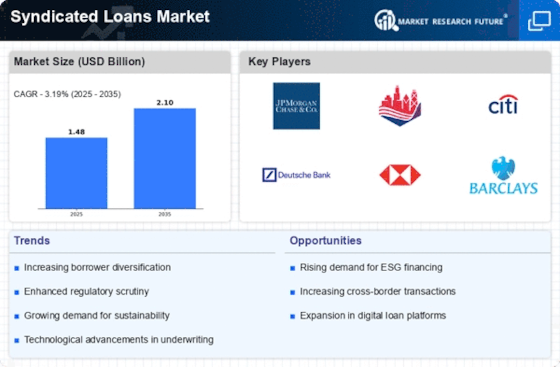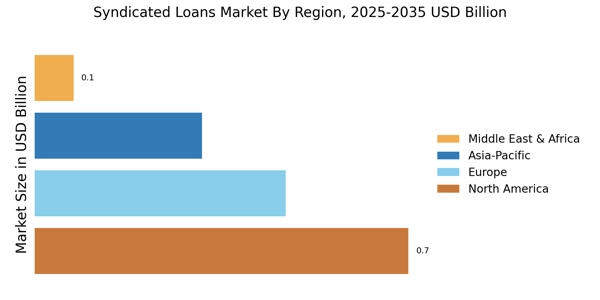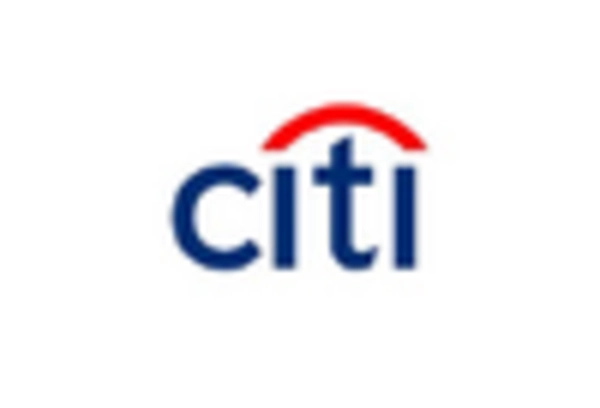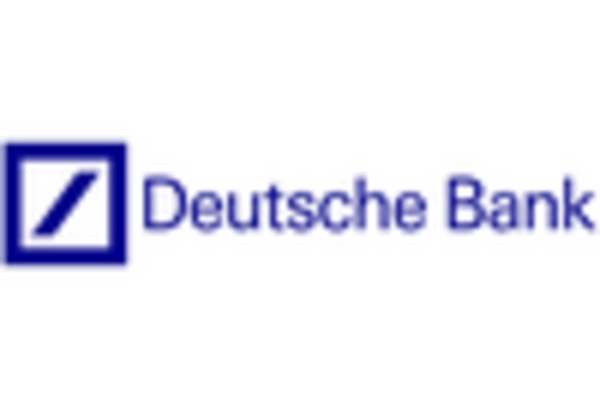Diversification of Lender Base
The Syndicated Loans Market is witnessing a diversification of its lender base, which is contributing to its expansion. Traditionally dominated by large banks, the market now includes a variety of financial institutions, including regional banks, insurance companies, and private equity firms. This diversification allows borrowers to access a broader range of financing options and terms, potentially leading to more favorable conditions. Recent data indicates that the participation of non-bank lenders in syndicated loans has increased by approximately 20% over the past year. This shift not only enhances competition among lenders but also provides borrowers with greater flexibility in structuring their financing solutions. As a result, the Syndicated Loans Market is likely to benefit from this evolving landscape, fostering innovation and responsiveness to borrower needs.
Rising Interest in Emerging Markets
The Syndicated Loans Market is increasingly focusing on emerging markets, where economic growth and development present lucrative opportunities for lenders and borrowers alike. As these markets continue to mature, there is a growing appetite for syndicated loans to finance infrastructure projects, energy initiatives, and other critical developments. Recent reports suggest that the volume of syndicated loans directed towards emerging markets has increased by approximately 15% in the last year. This trend indicates a shift in lender strategy, as they seek to capitalize on the potential returns associated with financing projects in these regions. Consequently, the Syndicated Loans Market is likely to see sustained interest and investment in emerging markets, further driving its growth trajectory.
Regulatory Adaptations and Compliance
The Syndicated Loans Market is navigating a landscape of evolving regulatory frameworks that impact lending practices. As governments and regulatory bodies implement new compliance requirements, lenders are adapting their strategies to align with these changes. This adaptation is crucial for maintaining market stability and ensuring that lending practices remain sound. Recent analyses suggest that compliance costs have risen, prompting lenders to seek more efficient syndication processes. However, these regulatory adaptations also present opportunities for innovation within the Syndicated Loans Market, as firms develop new products and services to meet compliance standards. As a result, the industry is likely to evolve in response to these regulatory pressures, fostering a more resilient and compliant lending environment.
Increased Demand for Large-Scale Financing
The Syndicated Loans Market is currently experiencing a surge in demand for large-scale financing solutions. Corporations are increasingly seeking substantial capital to fund expansion projects, acquisitions, and infrastructure developments. This trend is evidenced by the rise in the average size of syndicated loans, which has reportedly reached approximately 500 million USD in recent transactions. As companies pursue growth opportunities, they often turn to syndicated loans as a means to secure the necessary funds while distributing risk among multiple lenders. This collective approach not only mitigates individual lender exposure but also enhances the overall stability of the financing structure. Consequently, the Syndicated Loans Market is poised for continued growth as businesses increasingly rely on these collaborative financing arrangements.
Technological Integration in Loan Syndication
The Syndicated Loans Market is undergoing a transformation driven by technological integration. Innovations such as blockchain and artificial intelligence are streamlining the loan syndication process, enhancing efficiency and transparency. These technologies facilitate real-time data sharing among lenders, borrowers, and other stakeholders, thereby reducing the time and costs associated with traditional syndication methods. Recent advancements indicate that the adoption of technology in the Syndicated Loans Market could potentially reduce transaction times by up to 30%. As financial institutions increasingly embrace these technological solutions, the market is likely to experience enhanced operational efficiency and improved borrower experiences, positioning it for future growth.


















Leave a Comment